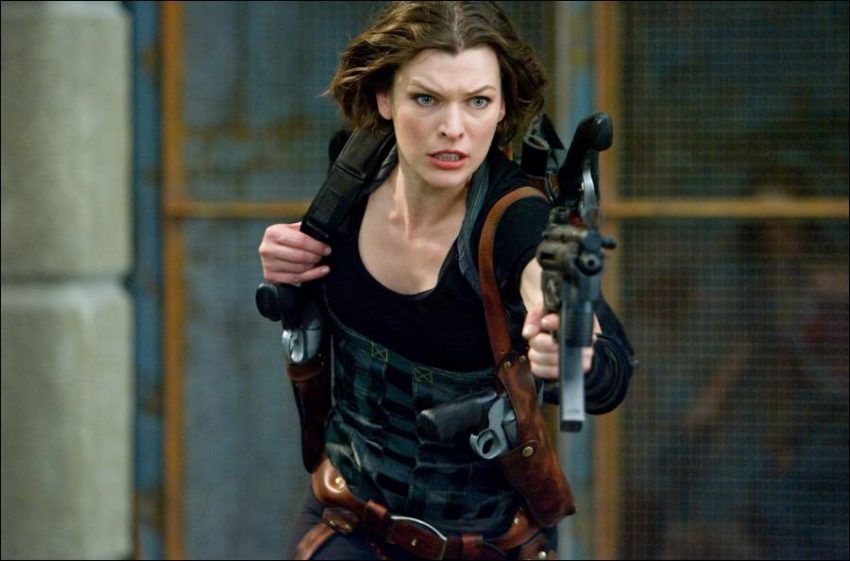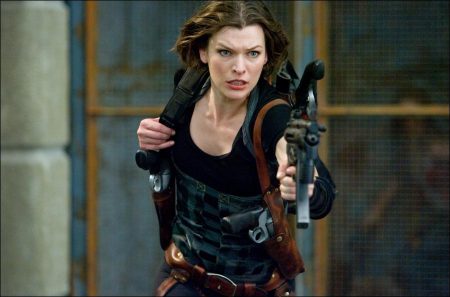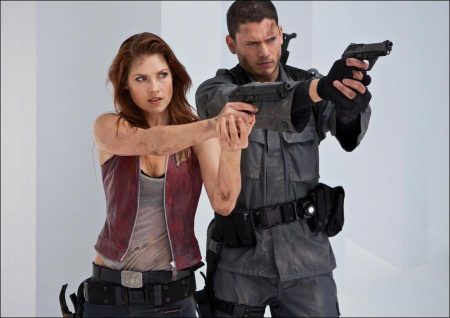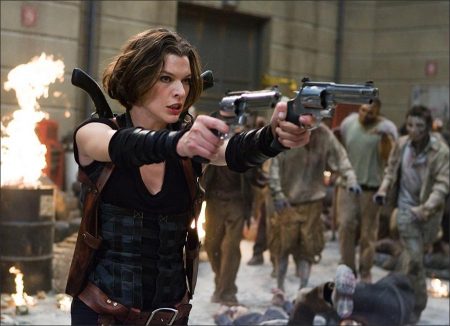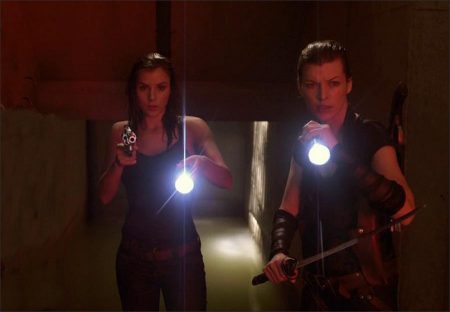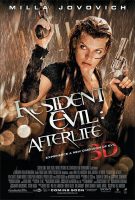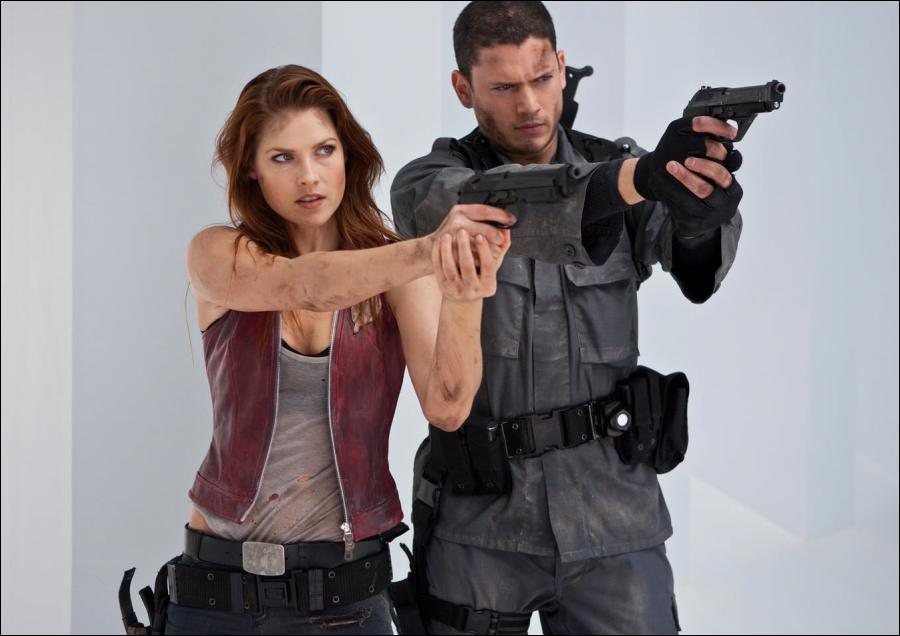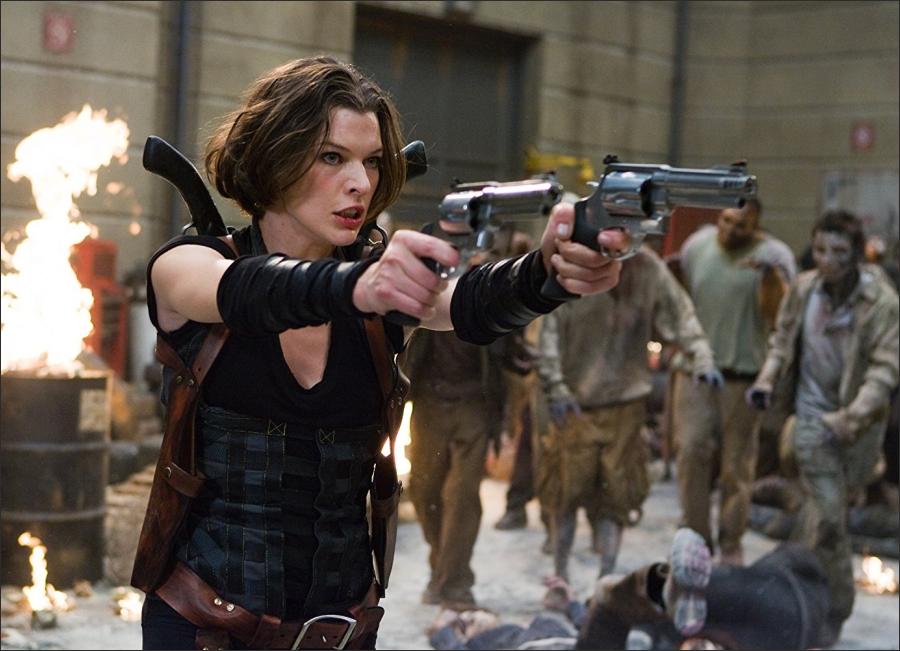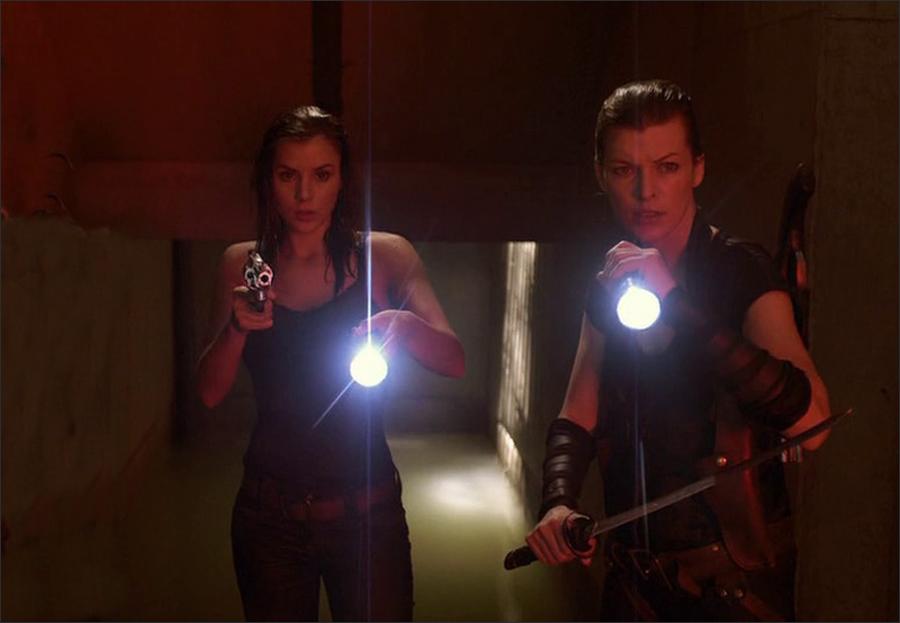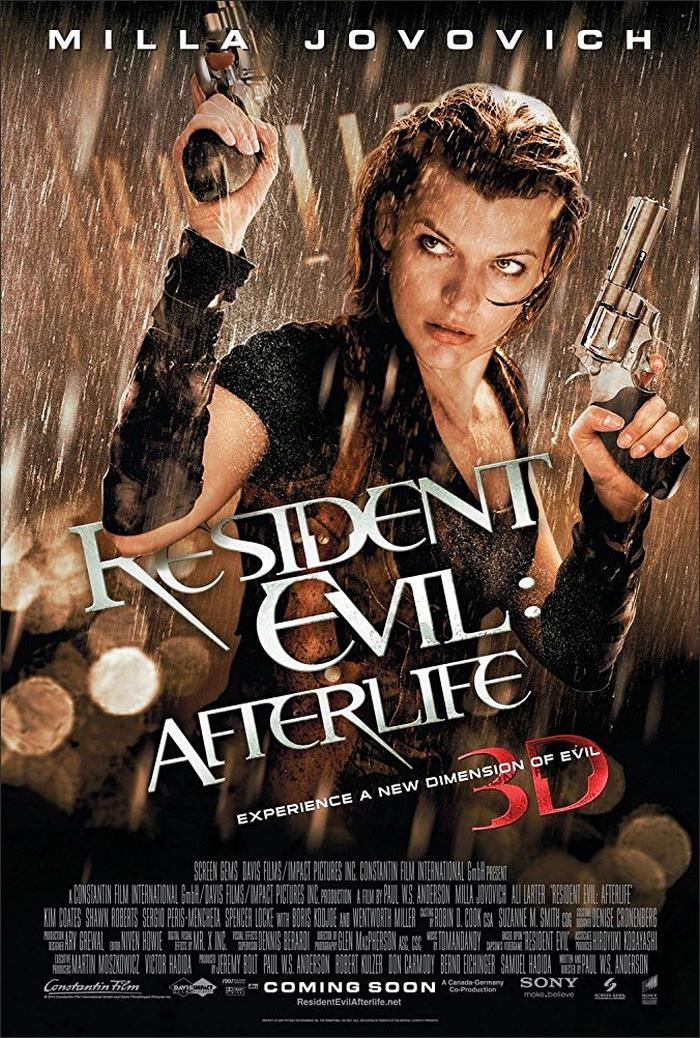The Search for Survivors
The cast of Resident Evil: Afterlife features some fresh faces as well as several that will be familiar to franchise fans. But no matter how popular a character becomes, warns Anderson, there are no guarantees of survival in the film’s brutal, futuristic world.
“The Resident Evil franchise has become well known for bringing back popular characters for another outing,” Anderson says. “It’s also famous for killing them off without warning. We’ve established that just because you’re a big character in the video game and you were in the last movie, that doesn’t mean we’re not going to kill you in this movie. We did it with several characters in the last film. I think that gives a level of uncertainty in the films that make them truly scary.”
There is one constant in the franchise, however: Alice, played by Milla Jovovich. “Alice is the ultimate heroine,” says producer Don Carmody. “She’s a combination of Wonder Woman and Indiana Jane and she’s out there kicking ass and taking names.”
After eight years and four films, Jovovich knows the role better than anyone, Anderson says. “When I first talked to her about Alice, I used references like Clint Eastwood from the Dirty Harry films, Charles Bronson, Steve McQueen. They were existential characters, but, damn, they were cool. Plenty of guys have tried to be the new Clint Eastwood or the new Steve McQueen, but there aren’t many women who have played those characters and played them as convincingly as Milla has.”
In fact, Jovovich is one of the very few women ever to successfully anchor an action franchise. “Sigourney Weaver had the same kind of success with the Alien franchise,” points out Anderson. “I think it’s for the same reason. She is a very good actress who really makes you believe in the alien and in that far-flung, science fiction world. Milla does that for us.” Jovovich says she has grown attached to her character over the years. “I’m always excited to see where she’s going next,” explains the actress. “She’s become such a huge part of my world. As I’ve become more immersed in the world, she’s almost become a part of me.”
The character has evolved since the first film, according to Jovovich. “Alice started out as an innocent character who doesn’t remember anything that’s happened to her. Eventually she realizes she caused the accident that started the outbreak of the T-virus. She has a great sense of guilt and self-loathing by the second movie.
“Because Umbrella is constantly trying to trap her, she can’t be with anyone that she cares about because they could potentially be captured,” she continues. “Alice has become a very lonely person. In this movie, she’s taking back her self-respect. For the first time in a long time, she feels like she belongs in this world again. It’s been quite a beautiful progression for me to play as an actress.”
With each film, Anderson tries to present Jovovich with a fresh challenge. In Resident Evil: Afterlife, he gives her the task of playing an army of Alice clones. Jovovich approached the multiple roles with enthusiasm. “There’s only one of me, obviously,” she says. “But I have to play each of the Alices. I wanted to get creative with it as well, so each Alice has her own personality. They’re not carbon copies of each other.”
The characterizations were so subtle, says Anderson, it wasn’t until he began editing that he fully appreciated the nuances. “It was only when we composited three Millas together that I realized they were actually three completely different characters. This is Milla’s franchise and she keeps it alive by investing a thousand percent in it. People see the honesty and the integrity in what she’s doing and that’s why they buy into the movies.”
Resident Evil: Afterlife reunites Alice with a fellow survivor from the previous film, Claire, played again by Ali Larter. Jovovich feels the same bond with her co-star that Alice has with her comrade-in-arms. “We’re really a team,” says Jovovich. “She brings such realism to the material. It’s a pleasure to work with a strong, intelligent, gorgeous female. It pushes me to be my best and I think I push her to do better and better. It’s so nice to work with someone who inspires you.”
Larter was thrilled that Anderson brought her back in what has become an iconic role for her. She was also eager to work with Jovovich again. “One of the unique things about this story is that it has two fierce female characters,” Larter says. “Alice and Claire are both fighters, but Alice is almost a mythical figure. Claire is the human component. She has an indestructible spirit. They both will do whatever they have to do to survive, but they also have a need to take care of others.”
Claire, who was last seen leading a group of survivors to what they believed was a safe haven in Arcadia, Alaska, has had most of her memory wiped clean when Alice discovers her wandering in the Arctic wilderness. “She is in complete and utter survival mode,” says Larter. “In the last movie, Claire became a reluctant leader. In this movie, that has become her natural instinct. As soon as she discovers that, she starts to fulfill her true destiny.
“A lot of what Claire experiences is about faith and trust,” adds Larter. “She has to decide whether she can believe what someone tells her or whether she needs to remember and experience it herself. It’s also the struggle of personal sacrifice. Both Alice and Claire have lost so many friends, as well as some of the ideals and hopes they had. They’re living in a much harsher reality.”
Working in 3-D has upped the ante for the franchise, in Larter’s opinion. “We are at the forefront of 3-D technology with this film and it’s thrilling to watch something new being created,” she says. “This is Paul Anderson’s vision of what happens when the world ends. It’s zombies and kicking ass and fighting for survival. By doing it in 3-D, we set those images on fire.”
Despite the advanced technology used to make the film, some aspects of the production process still require actors to perform demanding action sequences in front of the camera. “Both Milla and I love to do our own stunts and part of the fun in this movie is the physicality that comes along with it,” says Larter. “We were shooting in torrential rain and about six inches of mud. People were slipping and sliding, I was face down in the dirt and I looked up to see about a hundred and ten people, in galoshes, hats, rain gear, all covered to the nines, and I thought, this is my day job?”
In each of the previous films, Alice has formed a surrogate family of sorts with other survivors she encounters. This time, Anderson has added an actual brother-sister relationship featuring one of the game’s most popular characters, Chris Redfield, Claire’s brother. “I love the family dynamic that Paul has added,” says Larter. “I think it really grounds the movie in a place that people can relate to. But we definitely do not fall into ‘Oh, my long-lost brother’ reunion mode. It’s actually more of a kick-ass moment.”
Wentworth Miller, who had just finished playing four years as Michael Scofield on “Prison Break,” finds himself back behind bars when his character is introduced. “Chris Redfield had been working with a military unit that was using the prison as a staging post when the outbreak began,” he explains. “When the inmates were released to help fight the undead, they mistook Redfield for a guard and left him in a high security cell in the prison.”
Miller says he had some initial doubts about the role. “When I first got the script, I thought it was practical joke,” Miller says. “You meet my character in prison and the first thing out of his mouth is, ‘I know a way out of here.’ As great as the part is and as terrific as the franchise is, I thought it felt too familiar. But I developed a different perspective after a while. If you don’t know me from ‘Prison Break,’ then you’re going to watch this and nothing’s amiss. For those who do, it’s kind of a cool wink-wink to all the fans who stuck with Michael Scofield for 81 episodes. In a way, this is my chance to give that character a different ending.”
Chris and Claire Redfield were separated soon after the T-virus was unleashed. Both assume the other is long dead. “He’s just emerging from the cell where he’s been imprisoned for years and suddenly there’s the face of his long-lost sister,” says Miller. “There’s a tremendous moment of shock and recognition, followed by a surge of emotion and tenderness, But at the same time, it’s Resident Evil. Just as the scene begins to tiptoe into sentimental territory, there’s this shift and it becomes about these characters being in conflict.”
Like everyone involved in the franchise, Miller is respectful of its tremendously loyal fan base. “As far as I’m concerned, this is already locked and loaded. Resident Evil: Afterlife does what the franchise has been doing for eight years, which is exploring this magnificent, rich, dark post-apocalyptic scenario. Not only do you get the chills and the spills and the thrills, you also get interesting, believable, relatable characters that you can live through vicariously. Not for a moment would you want to experience what Alice or Claire or Chris is experiencing, but it’s a hell of a ride.”
Being on set with the film’s leading lady was a revelation for Miller. “I only knew Milla as this gorgeous, kick-ass warrior,” he confesses. “She’s so impressive on screen, the way she holds herself—the swords, the knives. Then I find that she’s a total cut-up. She’s really got this loud, loose, in-your-face laugh and a sense of humor that makes her seem like one of the guys. To find all of that in the same package with her beauty and intelligence and the acting chops is extraordinary.”
Also new to the world of Resident Evil is actor Boris Kodjoe, who plays Luther West, the unofficial head of a small group of survivors barricaded into a prison. “Luther is a natural leader,” says Kodjoe. “He is an ex-pro athlete who assumes his leadership position out of necessity. He’s confident; he’s very disciplined, and that is what keeps him sane.”
Kodjoe, whose recent feature film credits include major roles in Surrogates, opposite Bruce Willis, and Tyler Perry’s Madea’s Family Reunion, had planned to be a professional tennis player until a back injury put him on the sidelines. “I could relate immediately to where Luther was coming from,” he says. “It was exciting to me because I got to focus on getting ready for the film physically and mentally. It gave me something to grab hold of. I would do push-ups and crunches on set to get ready for the take and it got my blood flowing.”
Alice and Luther connect immediately, almost instinctively, he says. “They’re both alpha dogs. She’s very strong and confident woman and he gravitates towards that. They become teammates, so to speak, and they’re going to find a way out together.”
Kodjoe promises fans that Resident Evil: Afterlife is by far the scariest movie in the series. “The zombies are beyond scary,” he says. “They’re super-special, Type A zombies. There’s a character from the game called the Axeman. He makes me look tiny. I don’t think people are ready for the Axeman—he’s very intimidating. There are all kinds of surprises waiting around every corner.”
Kodjoe impressed Jovovich not only with his acting skills, but also with his dedication to his family. “Boris is one of the most outstanding human beings I’ve ever met,” says Jovovich. “He is a real hero. His daughter has spina bifida, and Boris and his wife have started a foundation called Sofie’s Voice to raise money for research. It is unbelievable what these two people have accomplished for their daughter. He’s such an inspiration.”
Any story set in Hollywood has to include a movie producer and in Resident Evil: Afterlife, that slot is filled by Bennett Sinclair, played by Kim Coates. “Kim is an unbelievably hilarious guy,” says Jovovich. “He’s a great actor and a great improviser, who brings so much life to his character. He had everyone in stitches. It’s hard to keep a straight face when you’re working with him, because he’s just so funny.”
Coates credits Anderson with creating a colorful character and then letting him run with it. “Paul was awesome,” he says. “He just let me go and bring some humor to my character. Bennett thinks a lot of himself and he’s not afraid to tell you that.
“He’s got a little Errol Flynn in him, a little swashbuckling,” Coates continues. “This guy’s definitely a survivor. There are good guys and bad guys in this story. I think he’s a bit of both. He’s certainly not on the bad team, but he does a couple of things in this movie that are shocking.”
For inspiration, Coates didn’t have to look past the movie set. “To play a film producer was great,” he says. “I liked to tell our producers, Don Carmody and Robert Kulzer, that I was picking up a few things from them. I never told them what those things were though.”
Spanish actor Sergio Peris-Mencheta rounds out the band of survivors. Resident Evil: Afterlife is only his is second film in the U.S. “I’m bilingual in Spanish and French, but my English is not as good,” he says. “Last year, Taylor Hackford was looking for an actor to play an Argentinean boxer in Love Ranch, and he found me on the Internet. I went to L.A. and auditioned with Helen Mirren and Joe Pesci and I got the job.”
“To be in this movie is to have one of my dreams come true,” he says I’ve played the game for hours with my friends at home but I never thought I would be one of those guys shooting zombies.”
The film’s iconic villain is Albert Wesker, chairman of The Umbrella Corporation. “Wesker is the personification of the giant corporation that will stop at nothing to turn a profit,” says Carmody.
A prominent character in the game series, “Chairman Wesker was a good guy in the early games,” says Bolt. “He’s become a tremendously fun villain because he loves his villainy. He does it without becoming ridiculous, so we embrace that in the film. And the actor playing Wesker, Shawn Roberts, worked extremely hard to convey that.”
Resident Evil: Afterlife (2010)
Directed by: Paul W.S. Anderson
Starring: Milla Jovovich, Ali Larter, Wentworth Miller, Kim Coates, Shawn Roberts, Sergio Peris-Mencheta, Spencer Locke, Boris Kodjoe, Sienna Guillory, Kacey Clarke, Norman Yeung, Christopher Kano
Screenplay by: Paul W.S. Anderson
Production Design by: Arvinder Grewal
Cinematography by: Glen MacPherson
Film Editing by: Niven Howie
Costume Design by: Denise Cronenberg, Azalia Snail
Set Decoration by: Carolyn ‘Cal’ Loucks
Art Direction by: Brandt Gordon
Music by: tomandandy
MPAA Rating: R for sequences of strong violence and language.
Studio: Sony ScreenGems
Release Date: September 10, 2010
